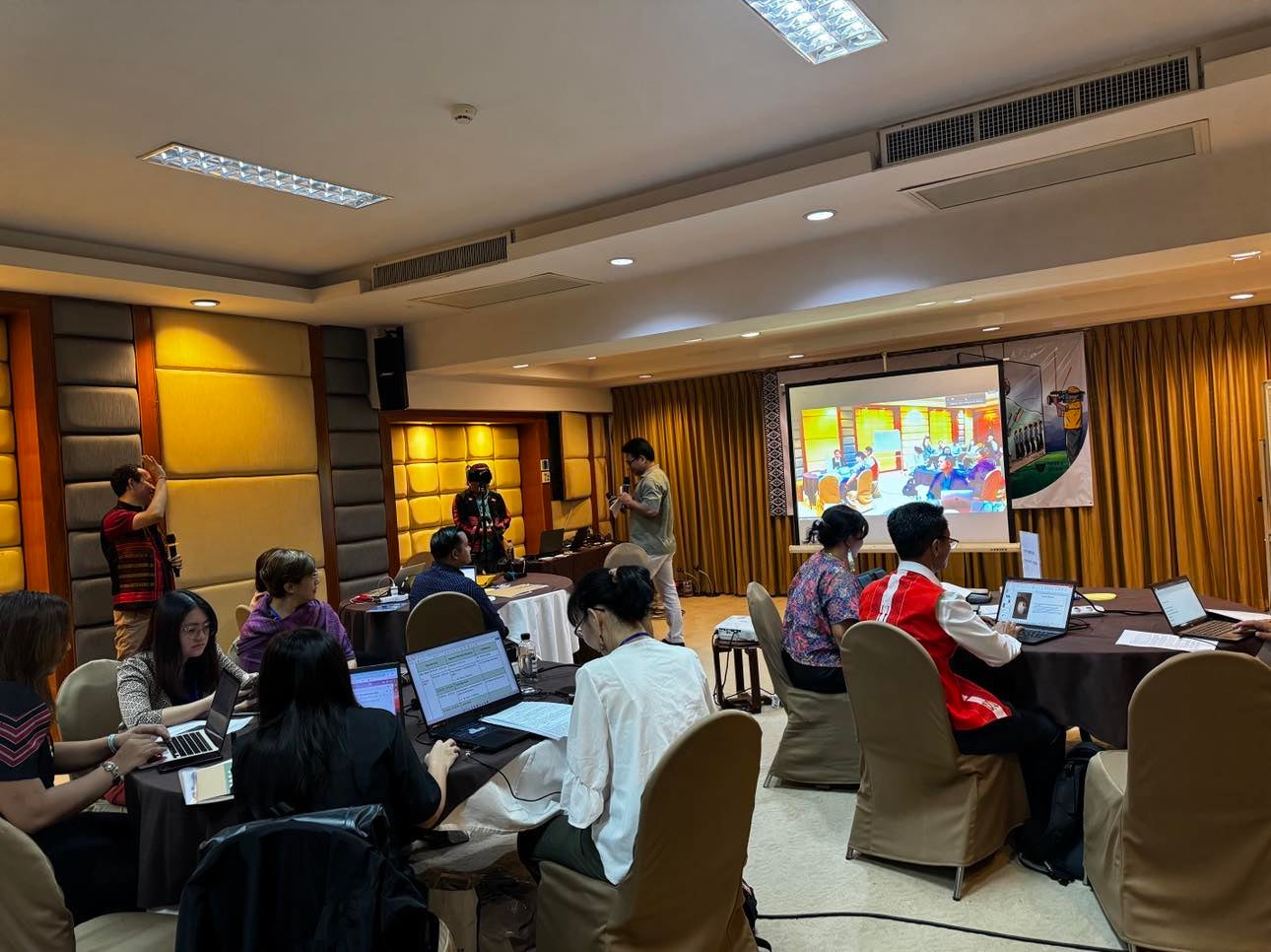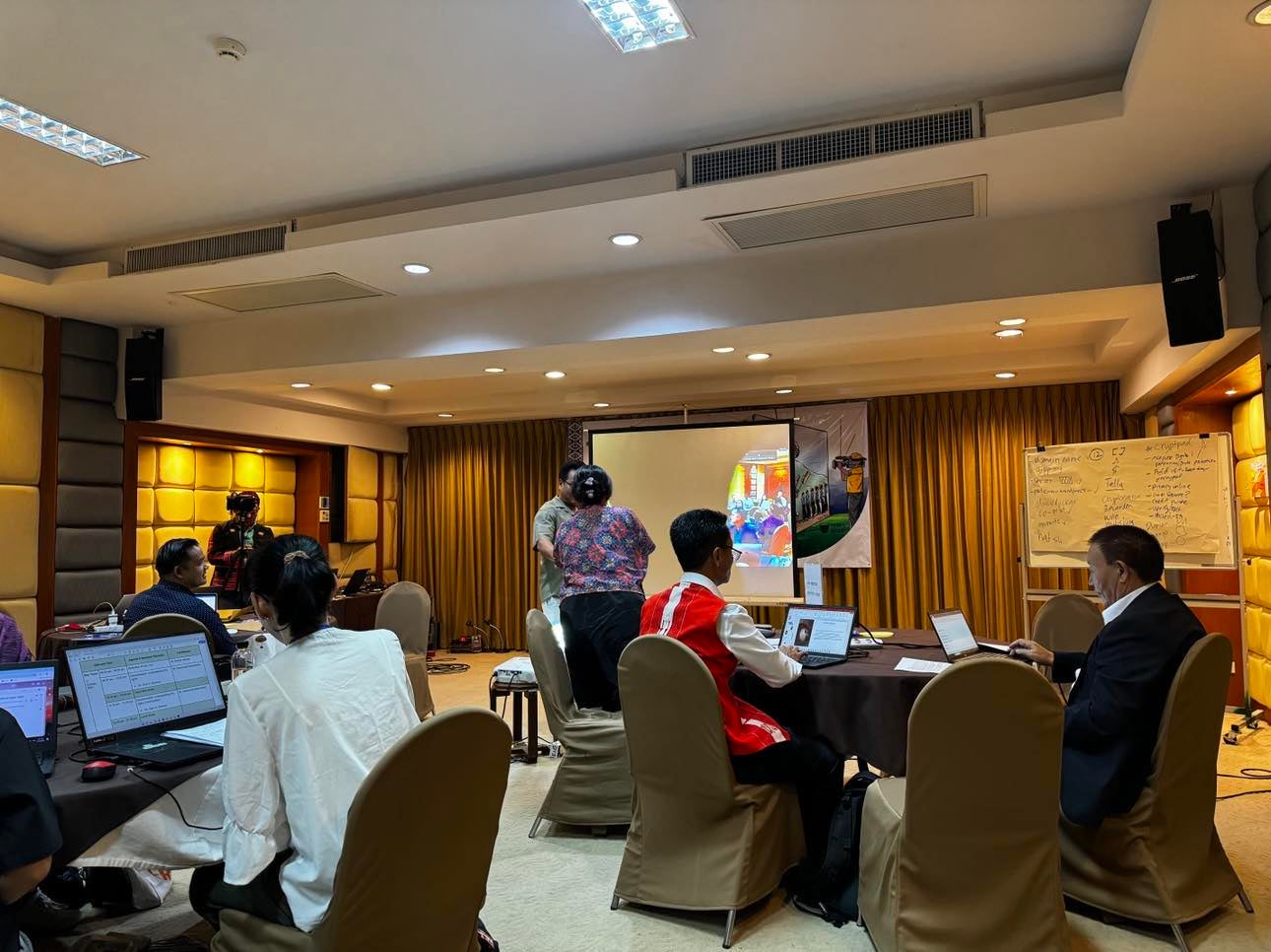Indigenous Voices Rising: Challenging Narratives and Shaping the Future of Media in Asia
21 Oktober 2024agnes
.jpg?itok=O_FNt4vr)
By Dev Kumar Sunuwar (Koĩts-Sunuwar, CS Staff)
Indigenous communities across Asia face a dual challenge: securing their rightful place in mainstream media and navigating the complexities of the evolving digital landscape. This was the central theme of the recent Indigenous Voices in Asia Network (IVAN) Exchange held from October 15-17, 2024 in Chiang Mai, Thailand. The event brought together approximately 30 working Indigenous journalists from 9 countries—Bangladesh, Nepal, Cambodia, the Philippines, Malaysia, Thailand, Taiwan, and Japan—to share their experiences, strategize for the future, and amplify their communities’ voices.
IVAN, a regional platform founded in 2013 under the Asia Indigenous Peoples Pact, promotes solidarity among Indigenous community media, journalists, and rights activists to advance media freedom, access to information, and indigenous rights in Asia. The exchange highlighted the ongoing struggle for accurate and authentic representation of Indigenous peoples in the media. Stereotypes, misrepresentation, and the absence of Indigenous voices in newsrooms continue to plague mainstream media, silencing the perspectives and stories of these diverse communities. This systemic exclusion prevents the public from gaining a complete understanding of Indigenous issues and perspectives, perpetuating power imbalances that leave Indigenous communities without a platform to shape the narratives that affect their lives.
“The relationship between Indigenous communities and mainstream media is fraught with historical baggage,” said Akash Poyam (Gond-Koitur), a former faculty member at the Asia College of Journalism in Chennai and founder of Adivasi Resurgence (currently offline), a news-media website dedicated to tribal Indigenous communities in India. “We’re often portrayed as romanticized figures of the past or victims of modern society, with no room for the complex realities in between.”
Poyam’s statement underscores a critical issue: the pervasive misrepresentation of Indigenous communities in mainstream media. This misrepresentation often takes two forms: the romanticized “noble savage” and the marginalized victim. The former, though seemingly positive, denies Indigenous Peoples their agency and reduces their cultures to static relics of the past. While acknowledging the real struggles many communities face, the latter reinforces damaging stereotypes of helplessness and dependence.
These limited portrayals erase the rich diversity, resilience, and dynamism of Indigenous cultures. They need to capture the strength and adaptability that Indigenous communities demonstrate in the face of adversity and overlook the valuable contributions these communities make to society. Many participants at the IVAN Exchange echoed this sentiment, pointing to the lack of Indigenous journalists in mainstream newsrooms as a key factor contributing to this misrepresentation.
A 2022 study in India revealed a stark absence of Adivasi (Indigenous Peoples) representation in leadership positions within Indian media, with 90 percent of positions held by upper-caste individuals. This lack of diversity leads to inadequate and often inaccurate reporting on Indigenous issues, perpetuating harmful stereotypes and leaving Indigenous perspectives unheard. This exclusion extends beyond newsrooms to journalism education itself; many journalism schools fail to incorporate Indigenous perspectives into their curricula, creating barriers for aspiring Indigenous journalists and further marginalizing Indigenous communities within the media landscape.

The Rise of Indigenous Media: Reclaiming the Narrative
In response to various challenges, Indigenous-run media outlets have emerged as essential platforms for self-determination. Despite often operating with limited resources, these outlets provide a space for Indigenous communities to share their own stories in their own words and on their terms. They are crucial in revitalizing Indigenous languages and cultures, promoting social justice, and advocating for Indigenous rights.
Indigenous media typically adopts an engaged and socially conscious approach to journalism. By centering the voices and experiences of their communities, these outlets challenge dominant narratives and present alternative perspectives on critical issues. They are potent tools for empowerment, cultural resilience, and social change.
The rise of social media has further democratized these efforts, enabling Indigenous communities to connect globally and counter prevailing narratives. Platforms like Facebook, X/Twitter, Instagram, and YouTube have become practical tools for amplifying Indigenous voices and reshaping public discourse. Digital platforms are increasingly vital for Indigenous communities, offering new ways to share stories, preserve languages, and mobilize for change.
However, Indigenous media faces its challenges. Limited resources, a lack of training opportunities, and resistance from state institutions obstruct the ability of Indigenous-run media to operate on equal footing with mainstream outlets. Despite these obstacles, Indigenous media has made significant strides in challenging the mainstream media’s misrepresentation of Indigenous cultures and rights. Initiatives like the IVAN Exchange promote decolonization and help influence how Indigenous perspectives are portrayed in the evolving digital landscape.
Country-Specific Challenges and Initiatives
The IVAN Exchange provided a platform for Indigenous journalists from across Asia to share their experiences and highlight the unique challenges faced by their communities.
In Bangladesh, Indigenous Peoples are striving for official recognition from the government. Despite the presence of over 54 Indigenous groups, the government acknowledges only 50, labeling them as “small ethnic minorities.” This lack of recognition has significant implications for their rights and welfare. Indigenous communities are also facing a surge in online hate and cyberattacks. In response, initiatives like IPNEWS BD have been launched to combat these challenges and uplift Indigenous voices through digital platforms. “We are focused on increasing audio-visual production, sharing photo stories and investigative reports, and building the capacity of Indigenous youth through journalism,” said Satej Chakma, Sub-Editor of IPNEWS BD, presenting the country situation of the Indigenous media. However, these efforts need more funding, resources, and skilled staff. Nonetheless, Chakma and others remain determined to empower Indigenous communities and defend their rights in the digital space.
In Sabah, Malaysia, a new initiative equips Indigenous youth with the skills to tell their stories through audio journalism. The “Community Journalism Through Audio Storytelling” project, led by Amanda W. Mojilip, aims to bridge the gap in media representation by empowering youth to share their perspectives on critical issues such as biodiversity, climate change, and socioeconomic challenges. The project has already produced positive results, with participants eager to learn new skills and gain confidence in communicating their communities’ stories. “Indigenous perspectives are often absent from these conversations,” Mojilip said, presenting the Indigenous media landscape in Malaysia. “This project aims to address that gap by teaching youth basic journalism skills.” Participants learned about community journalism, audio production, interviewing techniques, and scriptwriting. A field trip to the Daily Express newspaper gave them insight into news production and journalistic ethics.
“In Okinawa, Indigenous voices struggle to be heard in traditional and digital media. The need for laws to recognize the Ryukyu Peoples as an Indigenous group complicates their ability to assert their identity. Mainstream media often prioritizes political issues and the presence of U.S. military bases, leaving little space for Indigenous-focused content,” said Riku Akanmī Uchinā, LewChews, presenting the Japanese policies, practices, and challenges. According to him, the rise of artificial intelligence (AI) also poses new threats, particularly regarding intellectual property and preserving Indigenous knowledge. In response, there are calls for creating Indigenous-led digital platforms to share Ryukyuan culture and strengthen community identity.
Cambodia’s Indigenous Youth Media Network (CIYMN), a network of young Indigenous Peoples from different provinces, uses digital platforms like Facebook and YouTube to uplift youth to create content highlighting Indigenous culture and advocating for community issues. The network plans to expand its media and digital training programs to reach more young people in Indigenous communities.
In Nepal, Indigenous Peoples face significant barriers to accessing digital and traditional media. Language barriers and the digital divide limit their engagement in social and political life. Social media has also become a tool for exploitation, with traffickers targeting vulnerable Indigenous women and girls. Despite these challenges, Indigenous-led press, such as Indigenous television and Indigenous community radio networks, remains vital for empowerment. Advocates are pushing for increased Indigenous content creation in different Indigenous languages, social media training, and capacity-building programs to bridge the digital divide and ensure a more inclusive media landscape.
Artificial intelligence’s rise in journalism in the Philippines and Taiwan presents opportunities and challenges for Indigenous communities. While AI can streamline journalistic efforts, it also risks amplifying societal biases and perpetuating harmful stereotypes. To counteract these risks, ethical guidelines for AI in journalism are essential. News organizations must ensure that AI-generated content is transparent, fair, and free from biases. Human oversight and education are also critical to prevent the further marginalization of underrepresented voices. The Indigenous community takes charge of its narrative in Taiwan through digital media. Initiatives like Taiwan Indigenous Television (TITV) and the Central Taiwan Ping-Pu Indigenous Groups Youth Alliance (CTPPIGYA) demonstrate the media’s potential for empowerment. Similarly, Thailand’s Indigenous Media Network (IMN) amplifies the voices of Thailand’s marginalized indigenous communities. Through multimedia, IMN highlights pressing human rights issues these groups face, including land dispossession, limited access to essential services, and cultural erosion.

Building a More Inclusive Media Landscape
Creating a more inclusive media ecosystem requires contributions from all involved parties. Mainstream media should diversify their newsrooms by hiring Indigenous journalists and incorporating Indigenous perspectives into their reporting. This approach ensures that Indigenous communities have a voice in the stories that impact their lives and that their viewpoints are represented accurately and respectfully.
Journalism schools need to adapt their curricula to reflect Indigenous experiences better. This includes integrating Indigenous perspectives into journalism ethics, history, and practice. By equipping future journalists with the knowledge and skills to report on Indigenous issues accurately and sensitively, we can help dismantle the barriers that have historically marginalized Indigenous voices in the media landscape.
Support for Indigenous media is essential. Governments, foundations, philanthropists, and organizations must provide financial and technical assistance while respecting community autonomy. This support should include funding for Indigenous-led media outlets and training programs for Indigenous journalists, content creation in Indigenous languages, and initiatives to bridge the digital divide. By supporting and resourcing Indigenous media, we can shift the balance of power in the media landscape and ensure that Indigenous voices are heard.
Elevating marginalized voices creates a media environment that reflects the diversity of our society. An inclusive media landscape featuring Indigenous perspectives is a matter of justice and fairness and is vital for a healthy and vibrant democracy. When Indigenous communities have a voice in the media, they can engage fully in the public sphere and contribute to shaping their futures.
